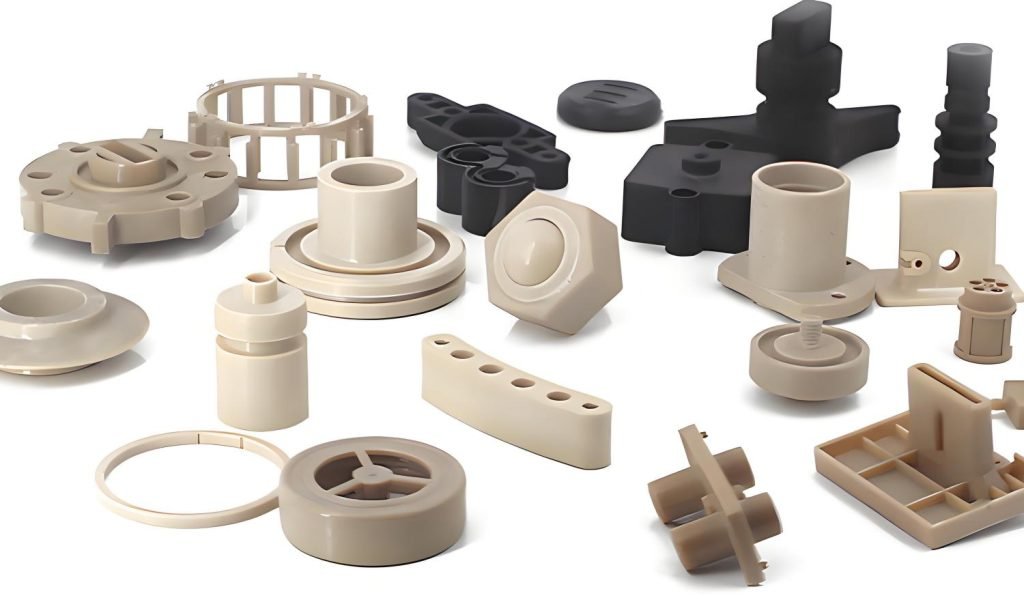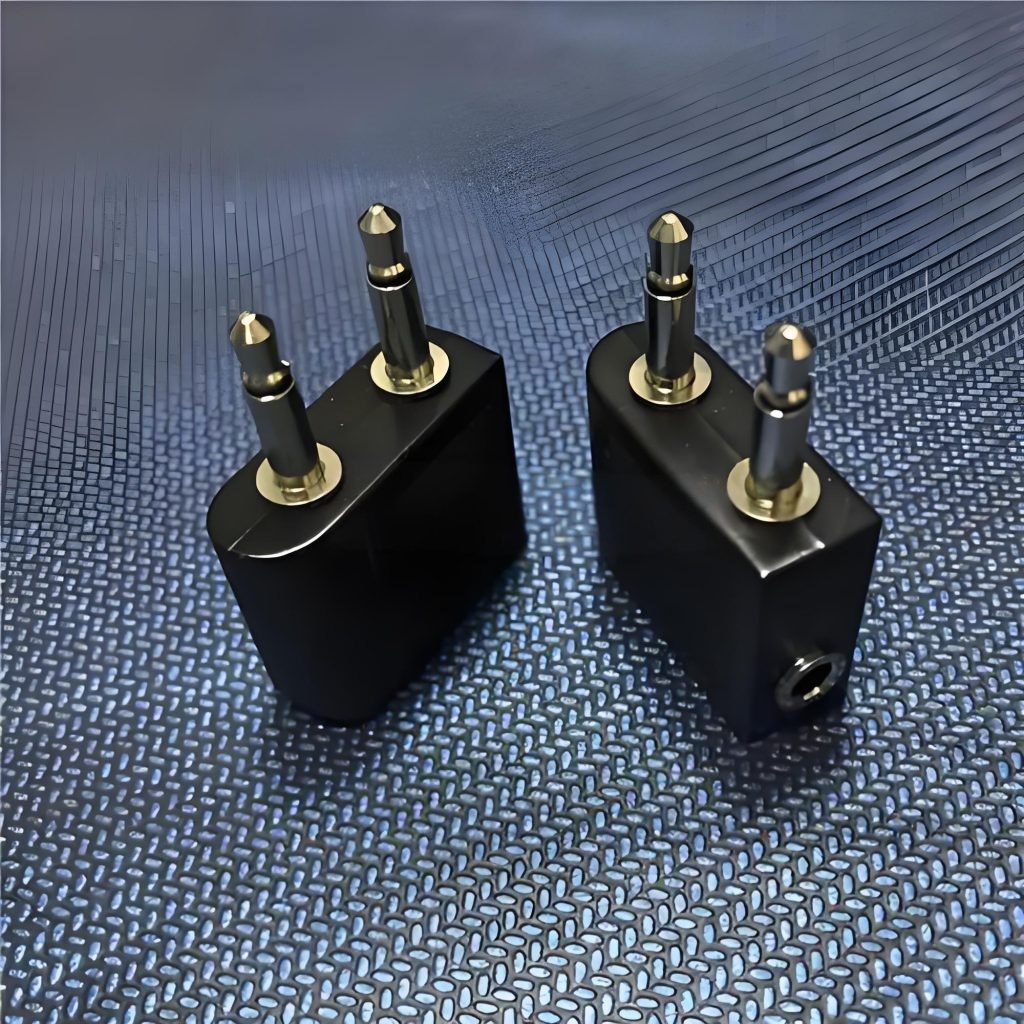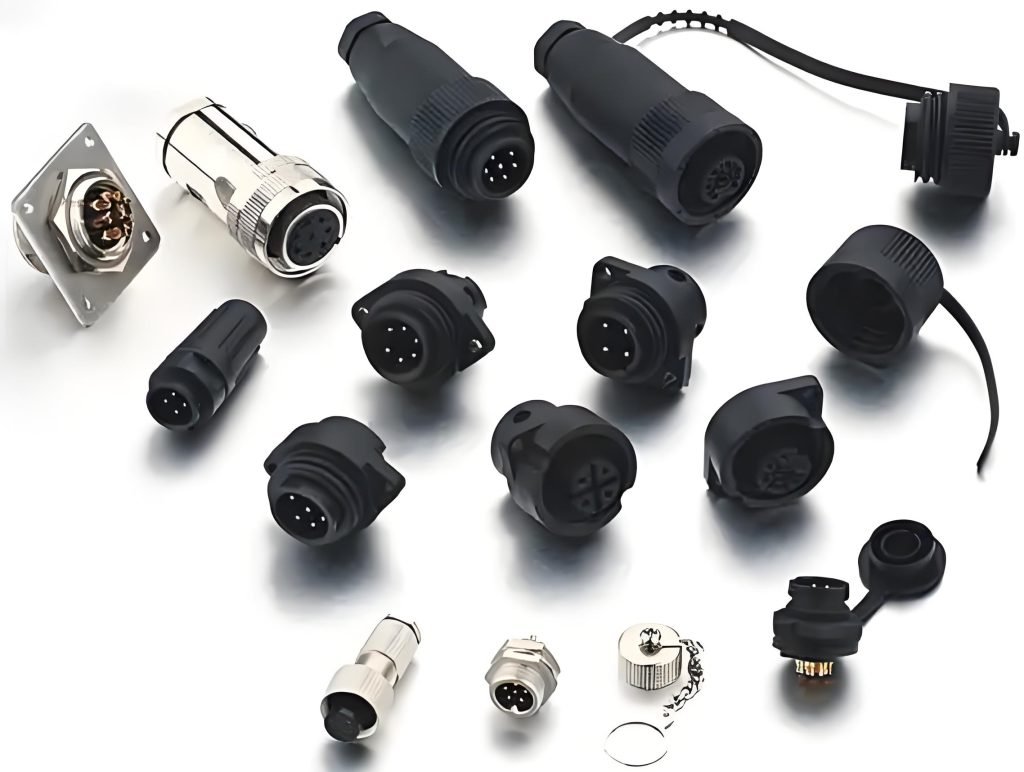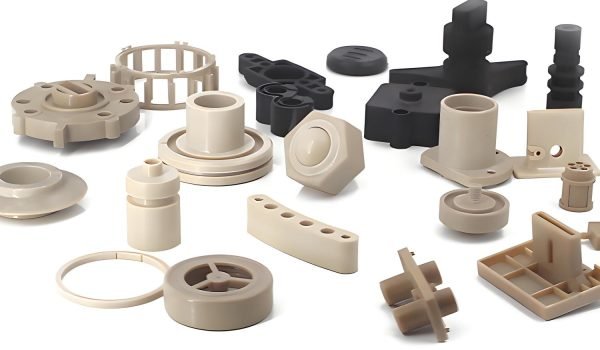Imagine you’re an aerospace engineer and you are creating a new aircraft. You need five thousand small, lightweight clips that will survive extreme freezing temperatures of -55 °C at 35,000 feet, right through to the extreme hot temperatures of the engine bay. They also need to be ready fast. A traditional metal shop tells you it will take months to make them. You need a better way.

This is where aerospace injection molding comes in. With this method, you can get those clips in a matter of days, not months. This guide will teach you the why, the what, and the how of aerospace injection molding. You will learn why it is so important and how you can use it.
Why You Should Choose Injection Molding for Aerospace
Aerospace injection molding of plastics is one of the most powerful manufacturing systems used in aerospace applications, from planes, and rockets, to satellites. There are so many advantages; you can shape incredibly complex parts and use unique materials.
Design Freedom
Aerospace injection molding allows for uniquely complex shapes. You can introduce features such as ribs, bosses, and snap-fits at the same time, meaning there is no need to build the part from many smaller pieces. You can also use molds that are quick to make, such as 3D printed aluminum. This allows your idea to be tested in under seven days as a real part. Such speed helps you find the perfect design much faster.
Huge Material Menu
When it comes to materials, you have an extensive list of special plastics to choose from. These are not the everyday types of plastics. You can use PEEK, PEI, or nylon reinforced with carbon fibre. These specialty plastics meet stringent specifications on strength, fire resistance, and behavior in a vacuum, and with the many options available, you are sure to find a material to suit your needs for a specific project.
Lightweight Components
One of the biggest benefits is weight savings. Using aerospace plastics instead of metals as a base material will allow you to reduce the weight of your parts by 20% to 60% – a critical consideration since every single gram on an aircraft translates to fuel costs. This saves money and is better for the environment.
Tight Tolerances & Precision
Aerospace parts must be made with extreme accuracy. Aircraft plastic molding can typically make parts that fall to tight tolerances, often at ±0.001 inches. This level of tolerance is critical to ensure parts fit together and function without issue. When producing a precision aerospace injection mold, everything matters, and injection molding will get you there.
High Strength & Durability
The plastics in this field are very strong. They are made to take on the elements, from the extreme cold of the upper atmosphere’s high altitudes to the extreme heat of re-entry. The resins provide a great combination of strength, impact resistance, and durability, with no concerns of cracking or failure under pressure – exactly what is needed for critical aerospace components.
Custom Surface Finish
You can have the exact surface finish desired straight from the mold. Whether you need a glossy, matte, or textured surface, you can have it without any secondary processing involved. You can also have part numbers or logos laser-etched directly into the mold for a unique way to ensure that each of the parts meets all necessary cosmetic requirements.
Consistent Quality
Aerospace injection molding is a very repeatable and predictable process. One mold can produce thousands of parts, all delivering the same or near identical quality. In an aircraft part, where a single part failure can be catastrophic, it is absolutely necessary. You can feel confident knowing that every part produced from the same mold will pretty much be the same as the others.
Lower Total Cost
Injection molding, when compared to methods like CNC machining, has a much lower cost for tooling and production, particularly when making a large number of parts. Once the mold is made, the time spent making each component is very brief. This means you get a lower price per part when you need a large number of them.
Materials for Aerospace Injection Molding
Selecting a material is a critical and key step in aerospace plastic molding. Every material has its own properties and attributes, which allow the options of certain applications. Below are some of the most common materials used for injection molding for aerospace components:
| Material | Key Properties | Aerospace Applications |
| Polypropylene (PP) | Lightweight, chemical resistant, good fatigue resistance | Interior panels, ducting, fluid reservoirs |
| High-Density Polyethylene (HDPE) | Impact resistant, moisture resistant, low cost | Fuel tanks, protective covers, housings |
| High Impact Polystyrene (HIPS) | Rigid, easy to process, cost-effective | Cabin interior components, prototypes |
| PEEK (Polyether Ether Ketone) | High strength-to-weight ratio, flame retardant, chemical resistant | Engine components, bearings, seals |
| Glass/Carbon Fiber Reinforced PEEK | Enhanced strength/stiffness, dimensional stability | Structural components, brackets |
| TPU/TPV Elastomers | Flexible, vibration damping, abrasion resistant | Seals, gaskets, vibration isolators |
| ABS (Acrylonitrile Butadiene Styrene) | Tough, good impact resistance, machinable | Instrument panels, enclosures |
Injection Molding Processes for Aerospace
Aerospace manufacturing has some variations for aircraft plastic molding, where all types started as the same idea, but are making different types of parts. You need to understand which process is best for your part so you can get the best results.
Standard Plastic Injection Molding
This is the most common and simple mode of injection molding. The process itself is straightforward; it consists of melting plastic, injecting it into a mold, cooling, hardening, and finally ejecting the finished part. This process is a highly effective and repeatable way to produce a part.
This method works well for a medium to large number of parts, such as thousands of identical clips or housings. Because the process is so consistent, it works very well for aircraft plastic parts where accuracy and variance from one piece to another are extremely important.
Overmolding
If you want a part that is made in two different materials, then overmolding is another excellent process. In overmolding, a softer plastic, or rubber-like material, is molded over a pre-made rigid plastic piece. Even a throttle lever in a cockpit has a rigid core to provide strength, and a softer material over-molded to create a comfortable grip for the pilot.
Using overmolding reduces the number of assembly steps you need to take (no gluing, no snapping parts together) and assists in forming a product that dampens vibration and feels solid with reduced shaking. This allows you to form one strong part that retains every role; the part is more functional and comfortable to use.
Insert Molding

With insert molding, you take a pre-made part – usually a metal part like a threaded bushing or an electrical terminal – and put it in the mold before you inject plastic. The hot plastic fills around the insert, firmly bonding it within the finished plastic part.
Insert molding is especially good for strong parts requiring both plastic and metal. That’s very helpful in creating a part like an avionics box, which needs metal threads to mount it. The process yields one integral component that provides structural strength as well as electrical shielding, all in one pass.
Micro Molding
Micro molding is the process for creating very small plastic parts with very detailed features. These parts can weigh less than 0.1 grams, and they can be as small as 10 micrometers. This process utilizes specialized, highly precise equipment to control the injection process on a very fine level.

Micro molding is very important in critical parts of advanced aerospace systems. For example, the sensor diaphragms in pitot tubes that measure an aircraft’s airspeed can be made with this technique. Micro molding makes these tiny components accurate and very reliable.
Common Aerospace Injection Molding Parts
1. Circuit Enclosures
Injection-molded circuit enclosures protect avionics from extreme environmental conditions. Circuit enclosures are typically made of high-performance plastics like PEEK or Ultem. They offer additional value, providing avionics with lightweight reduction for EMI, heat, and vibrations while still protecting the avionics. Precision molding allows for tight tolerances to be achieved, making the entire flight system reliable.
2. Bezels
Bezels for aerospace dashboards and displays are made from flame-retardant materials. Aerospace plastic injection molding enables modification to complex geometries with good quality finishes, which are important for seamless integration with cockpit panels. Bezels will survive severe extreme operating temperatures, while still retaining visual and functional performance as designed.
3. Battery Housings
Battery housings that are lightweight and durable are required for aerospace energy systems – molded thermoplastics such as nylon can offer sufficient thermal stability, and will hold up against impacts. Custom-designed battery housing requirements include features such as cooling vents, and a securing locking mechanism for safety within confined areas.
4. Radomes
Radomes protect radar and other signal systems while allowing signals to pass through. Injection-molded radomes are made of various specialty composites like fiberglass-reinforced plastics that maximize strength and transmission of radio waves. Radomes are often made in an aerodynamic shape to minimize drag.
5. Pilot Tubes
Pilot tubes used for measuring airspeed is another example where the performance of the part relies on accuracy in molding to ensure aerodynamic viability for operation in the flight environment. High-strength plastics like PPS resist icing and corrosion. Consistent wall thickness and smooth surfaces are critical for reliable performance in fluctuating pressures.
6. Turbine Blades
Injection-molded turbine blades, typically manufactured from carbon-fiber-reinforced polymers, allow for engine weight reduction while maintaining durability, in turn allowing each component to operate more effectively. Complex molds replicate airfoil profiles to allow for the maximum amount of functional operating efficiency of these blades, which need to withstand high rotational speeds and temperatures in auxiliary systems.
7. Chassis Parts
Injection-molded aircraft chassis components, such as brackets and housings, offer weight-saving benefits and flexible designs. Engineered plastics replace metal to reduce fuel consumption while meeting strict load-bearing and fire-safety standards.
Design Considerations for Aerospace Molding
There are many things to think about when you are designing a part for aerospace. This table gives you a simple overview of what to consider.
| Design Consideration | Requirement | Challenges | Impact on Your Project | Real-World Examples |
| Weight Optimization | Cut mass without hurting strength | Balancing thin walls vs. load paths | Lower fuel burn, higher payload | UAV brackets, interior seat frames |
| Complex Geometries | Fit tight spaces, add snap-fits or channels | Tooling with slides & lifters grows cost | Fewer parts, faster assembly | Air-duct elbows, cockpit bezels |
| Tight Tolerances | ±0.001″ dimensional accuracy | Shrink, warp, and tool wear | Perfect fit, zero rework | Sensor housings, valve seats |
| Material Choice | Meet FST, out-gassing, and temp specs | Limited resin grades, long lead times | Passes FAA flammability tests | Radomes, battery casings |
| Regulatory Compliance | Traceability per AS en 9100 injection molding | Paper trail for every gram of resin | Smooth certification, no delays | Flight-control enclosures |
| Surface Finish | Aesthetic + aerodynamic smoothness | Texture depth vs. mold polish time | Cut drag, boost brand look | Wing-root fairings, light lenses |
| Production Uniformity | Consistent part quality | Lot-to-lot resin variation | Zero field failures | Fastener clips, grommets |
| Cost Control | Target price at 10 k, 100 k, 1 M parts | Cycle-time vs. cavity count trade-offs | Keeps program budget on track | Seat-back shrouds, cargo nets |
Conclusion: Choose Fecision for Aerospace Molding
Fecision offers complete aerospace plastic injection molding services, backed by AS9100 certification and advanced full-production precision capabilities. We deal with it all, from design through prototypes to delivering the final part, all done while maintaining the highest quality with a well-rounded process. We focus on making mission-critical components, such as complex injection molded parts and precision machining parts.
We developed expertise in aerospace materials and the processes that help you manage the whole product journey from concept to delivery. Our real-time tracking and all-in-one service model simplifies your supply chain. We offer certified solutions for everything from commercial aircraft interiors to spacecraft components, balancing excellent quality with affordability.
Why Choose Fecision for Aerospace Manufacturing?
- AS EN 9100 injection molding & ISO certified aerospace production
- Prototyping to mass production in one facility
- ±0.001″ precise tolerance mold tooling & multi-process manufacturing
- Aerospace-grade plastics like PEEK, ULTEM deliver unmatched strength, heat resistance & durability
- Fast-turn solutions with real-time monitoring for efficiency
Ready to elevate your aerospace project? Contact Fecision today for precision manufacturing solutions.




